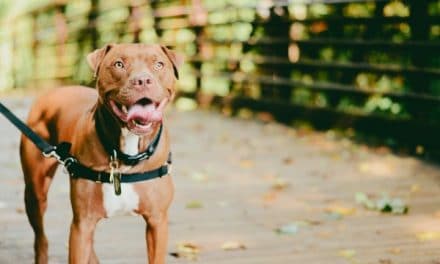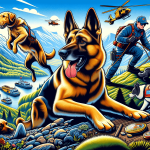The Vizsla dog breed is known for its sleek, light red-gold coat and elegant, muscular build. The face is lean and aristocratic, with long pendant ears and light eyes.
- Dogs have thick necks and long, strong legs, with a gait that is robust, distinguished, and elastic.
- The coat is short and tight to the body, displaying the defined musculature.

Photo taken by 1000zen from Flickr is licensed under CC BY-SA 2.0.
Temperament
- Vizslas are loving animals that display affection easily and often. They are gentle, but can be willful and easily distracted by their inquisitive nature. Exceptionally intelligent, dogs enjoy training under a firm and patient master – they love to please.
- Dogs may be too energetic for infants and toddlers, but they are wonderful with children and are gentle with all members of the family, as well as other dogs. They are easily excited and known for their exuberant, prancing greeting.
- Early socialization is essential, as is daily exercise to keep dogs from becoming neurotic or destructive. These dogs are chewers, so it is important to train dogs to obey rules and boundaries.
- Vizslas are skilled hunting dogs with strong tracking, pointing, retrieving, and watchdog instincts.
Height and Weight
- Adult males tend to be 22-26 inches tall and weigh around 45-60 pounds.
- Adult females are generally 20-24 inches tall and weigh about 45-55 pounds.
Living Conditions and Exercise
- The Vizsla dog breed does best with a large yard, and is not recommended for apartment living. This breed is moderately active even indoors and needs space to move and play.
- These are energetic working dogs with impressive stamina. Dogs need long walks, jogs, or runs daily. Particularly fast runners, they also make excellent biking or blading companions.
- Whenever possible, Vizslas enjoy time to run off-leash and love hunting.
Life Expectancy
- Well-cared for dogs can be expected to live 12-15 years.
Grooming
- The easy-to-care-for coat needs just occasional brushing and dry shampooing. Dogs should only be bathed with a mild soap when necessary. Nails should be kept well-trimmed.
- They are average shedders.
History
- Native to Hungary, the Vizsla dog breed is likely the combination of two breeds: the Transylvanian Hound and the now extinct Turkish Yellow Dog. More recently, Pointers and German Shorthaired Pointers have also been bred into the line.
- The breed nearly became extinct after World War II when Russia took over Hungary – the dogs were considered a sign of the aristocracy and owners could be killed. Hungarian owners smuggled a few dogs to Australia and other countries, where the breed was built up again.
- Vizslas were and remain popular for their hunting skills – they have excellent noses and are talented pointers, good with small and large game, and work well even on marshy terrain – but they are equally well-liked for their sweet, loving, family-friendly nature.
- The breed also does well in obedience or agility competitions.
Group and Recognition
- Grouping: Gun Dog, AKC Sporting
- Recognition: CKC, ACR, NKC, APRI, FCI, KCGB, AKC, UKC, ANKC, NZKC













